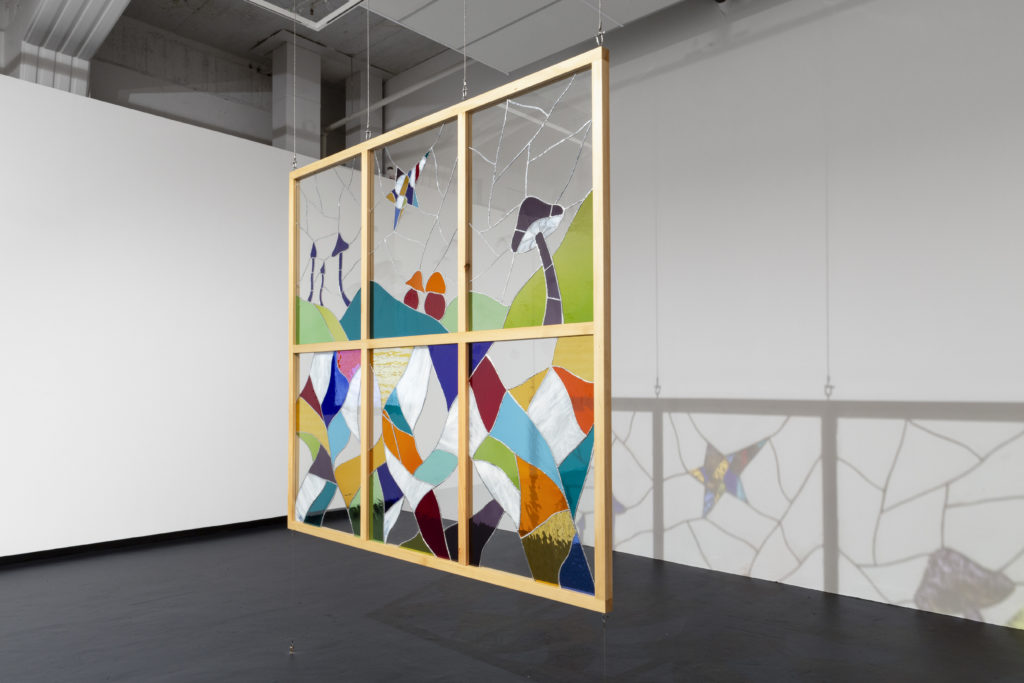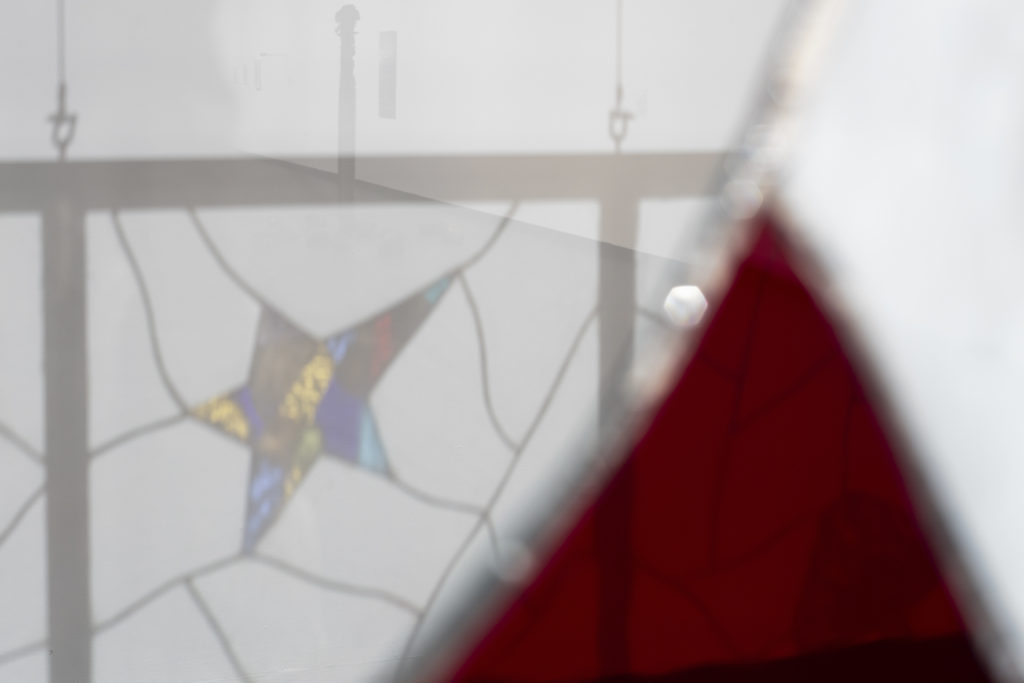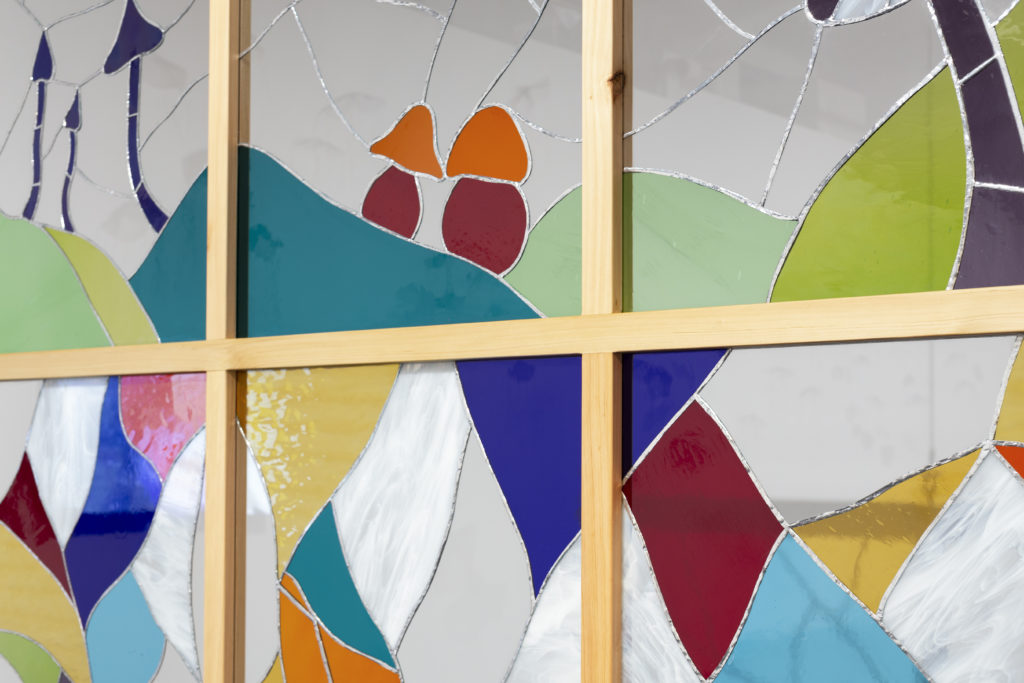‘Notes On’ is an online weekly exhibition column by Connie Brown.
Originally published in The Art Paper, Issue 04.

Online, mycology forums mimic their object of study. Threads accumulate, spreading deep and wide, bifurcate, and loop back upon themselves as users post images, seek help in identifying an unknown species, discuss medicinal uses, or simply in order to gush over an especially magnificent bloom with other enthusiasts. Forming one small part of this network is Georgette Brown’s Instagram account dedicated to mycelium, where she shares images of fungi spotted during her forest walks, their tiny heads bursts of colour among the greenery—purple, red, blue, yellow, orange, sometimes translucent like lychee “esh or jellyfish, or glass in the process of being blown.
In Tentacular Thinking, And Like a Web, Brown’s contribution to At Thresholds at City Gallery Wellington, she turns again to fungi with a six-panelled stained-glass window suspended like a wind chime in the gallery. As beings of known but beguiling intelligence, fungi are maybe equalled only by that other tentacled, polymorphous, mucusy creature: the octopus. The octopus is also, to Sophie Lewis, a “libidinous, umbrageous, vulnerable, radiantly sexy, omni-potentialized” thing; “a queer slut from outerspace!”(1) Brown depicts her mycelium like Lewis describes her octopi, attuned to its indelible eros in shonky-shaped bodies spurting forth, and kaleidoscopic shards, a riotous rhizome, braiding together like legs under a table playing footsies. Mycelium is pure, moist, intoxicating, interspecies communion; “a communally living underground body […] forged through the possibilities of latent commons, human and not human,” as Anna Tsing writes.(2) Or, as Donna Haraway puts it, the consummate probing, pulsing, interlacing tentacular being that “lives along lines” and “collects up multitudes.”(3) (Aka: A queer slut from underfoot!) Brown’s stained-glass might be a membrane of sorts, but it is one that yields to and plays with the penetrating light, joyously castings its veiny, web-like shadows across the wall and floor and anyone who walks behind it—not so much marking a threshold as signalling its potential dissolution.


(1) Sophie Lewis, “My Octopus Girlfriend,” n+1, issue 39, Winter 2021.
(2) Anna Tsing, The Mushroom at the End of the World (New Jersey: Princeton University Press, 2015), p. 271.
(3) Donne Harraway, “Tentacular Thinking: Anthropocene, Capitalocene, Chthulucene,” eFlux, issue 77, 2016.
